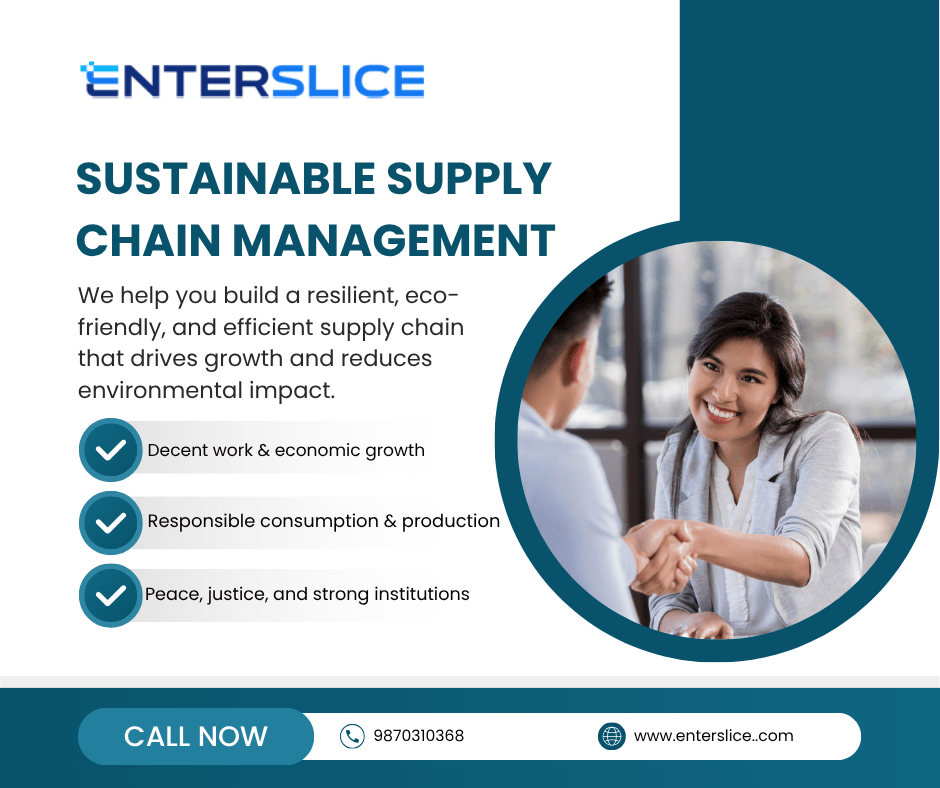In today’s fast-changing business environment, sustainability isn’t just a buzzword—it’s a necessity. Supply chains, the lifeline of any business, are under increasing scrutiny as consumers, investors, and regulators demand more responsible practices. Sustainable supply chain management goes beyond reducing emissions; it’s about creating long-term value through ethical sourcing, efficient logistics, and transparent operations.
This blog explores how businesses can adopt sustainable supply chain practices, the challenges involved, and the real-world benefits of making the shift.
What Is Sustainable Supply Chain Management?
Sustainable supply chain management refers to the integration of environmentally and socially responsible practices into every stage of the supply chain—from sourcing raw materials to manufacturing, distribution, and end-of-life product management. It aims to minimize environmental impact, ensure fair labor practices, and promote economic efficiency throughout the entire network.
For businesses, it’s not just about corporate social responsibility; it’s about resilience, risk management, and brand reputation.
Why It Matters Now More Than Ever
Several factors have elevated the importance of sustainability in supply chains:
- Climate change and environmental regulations are pushing companies to lower carbon footprints.
- Consumer expectations are shifting toward ethically made and eco-friendly products.
- Investors are increasingly using environmental, social, and governance (ESG) criteria to guide funding decisions.
- Global disruptions like pandemics and geopolitical tensions have exposed the fragility of traditional supply chains.
Ignoring these trends can result in higher operational costs, reputational damage, and missed business opportunities.
Key Components of a Sustainable Supply Chain
1. Ethical Sourcing
Sourcing raw materials responsibly ensures that they are obtained in a way that respects human rights and minimizes environmental harm. This involves working with certified suppliers, avoiding conflict materials, and monitoring labor practices in supplier networks.
2. Energy-Efficient Operations
Adopting cleaner production technologies, reducing waste, and optimizing logistics all contribute to a greener supply chain. Switching to renewable energy sources or energy-efficient transportation can significantly reduce a company’s carbon emissions.
3. Circular Economy Principles
Embracing circular economy models—where products are designed for reuse, recycling, or remanufacturing—helps reduce resource consumption and waste. This approach adds long-term value and can also open new revenue streams.
4. Supply Chain Transparency
With growing demand for traceability, businesses must be able to track and report the origin, handling, and environmental impact of their products. Blockchain and AI-powered platforms now offer real-time visibility across the supply chain, enhancing accountability.
How Enterslice Helps You Transition
Transitioning to sustainable supply chain management can be complex, especially for businesses operating in multiple geographies or sectors.
Enterslice offers end-to-end consulting tailored to your business needs, helping you:
- Conduct sustainability audits of your current supply chain
- Identify ESG-compliant vendors and partners
- Implement green procurement and logistics strategies
- Develop sustainability reporting frameworks
- Integrate digital solutions for supply chain monitoring
By partnering with Enterslice, businesses can streamline compliance, reduce operational risks, and strengthen stakeholder trust.
Overcoming Common Challenges
Implementing sustainable supply chain practices isn’t always straightforward. Here are some typical roadblocks and how to tackle them:
Cost Concerns:
Upfront investments in sustainable technologies and processes can be high. However, these often lead to long-term savings through improved efficiency and reduced waste.
Lack of Supplier Commitment:
Suppliers may not be on board with your sustainability goals. Clear communication, incentive structures, and supplier audits can help align expectations.
Data Gaps:
Without reliable data, it’s difficult to measure sustainability performance. Using digital tools for real-time data collection and analysis can close this gap.
Regulatory Complexity:
Navigating international environmental laws and standards can be overwhelming. Enterslice helps businesses remain compliant across jurisdictions by offering regulatory intelligence and support.
Benefits of a Sustainable Supply Chain
Businesses that invest in sustainable supply chain management stand to gain in several key areas:
- Improved brand loyalty among socially conscious consumers
- Operational efficiency through waste reduction and process optimization
- Regulatory compliance that avoids penalties and sanctions
- Investor appeal through ESG alignment
- Supply chain resilience against disruptions
More importantly, it reflects a company’s commitment to a better future—not just for itself, but for society and the planet.
Getting Started: Simple Steps Toward Sustainability
If you’re new to sustainable supply chain practices, start small:
- Audit your current supply chain for environmental and social risks.
- Set clear sustainability goals aligned with your business values.
- Engage your suppliers and stakeholders through transparent communication.
- Leverage technology to improve traceability and performance tracking.
- Work with experts like Enterslice to design and implement your strategy.
Taking a phased and informed approach helps you build momentum and ensures long-term success.
FAQs
1. What are the first steps to making a supply chain sustainable?
Start by evaluating your current supply chain, identifying sustainability gaps, and setting measurable goals. Partnering with consultants like Enterslice can accelerate this transition.
2. Can sustainable supply chain management reduce costs?
Yes, by improving efficiency, reducing waste, and optimizing logistics, sustainability initiatives often lead to significant cost savings over time.
3. How does technology support sustainable supply chains?
Technologies like IoT, blockchain, and AI improve supply chain transparency, track carbon emissions, and enhance decision-making for sustainability goals.
4. Why choose Enterslice for sustainable supply chain solutions?
Enterslice offers tailored strategies backed by deep industry experience, regulatory knowledge, and tech integration to ensure smooth and effective implementation.
















Leave a Reply